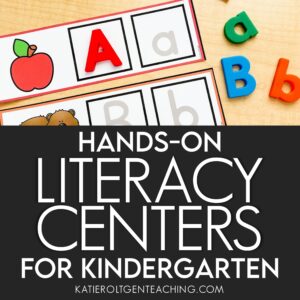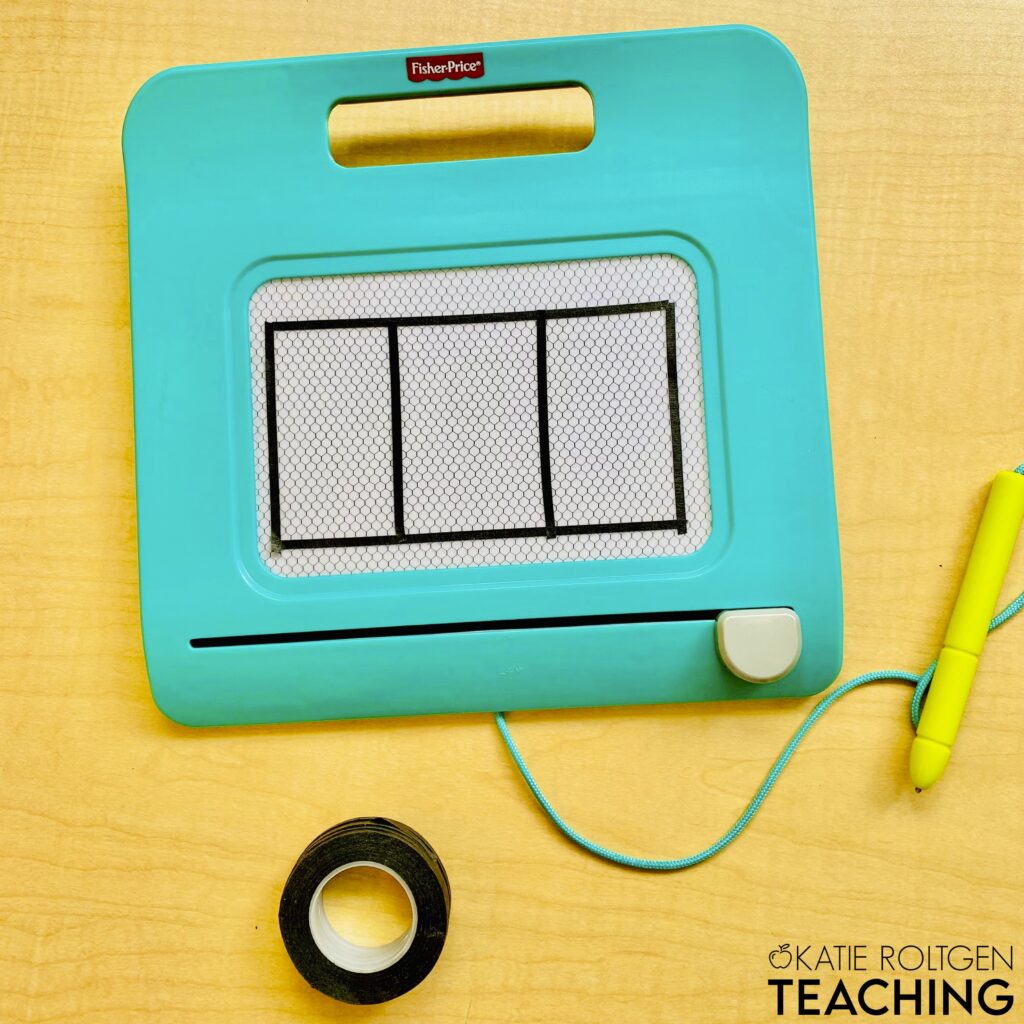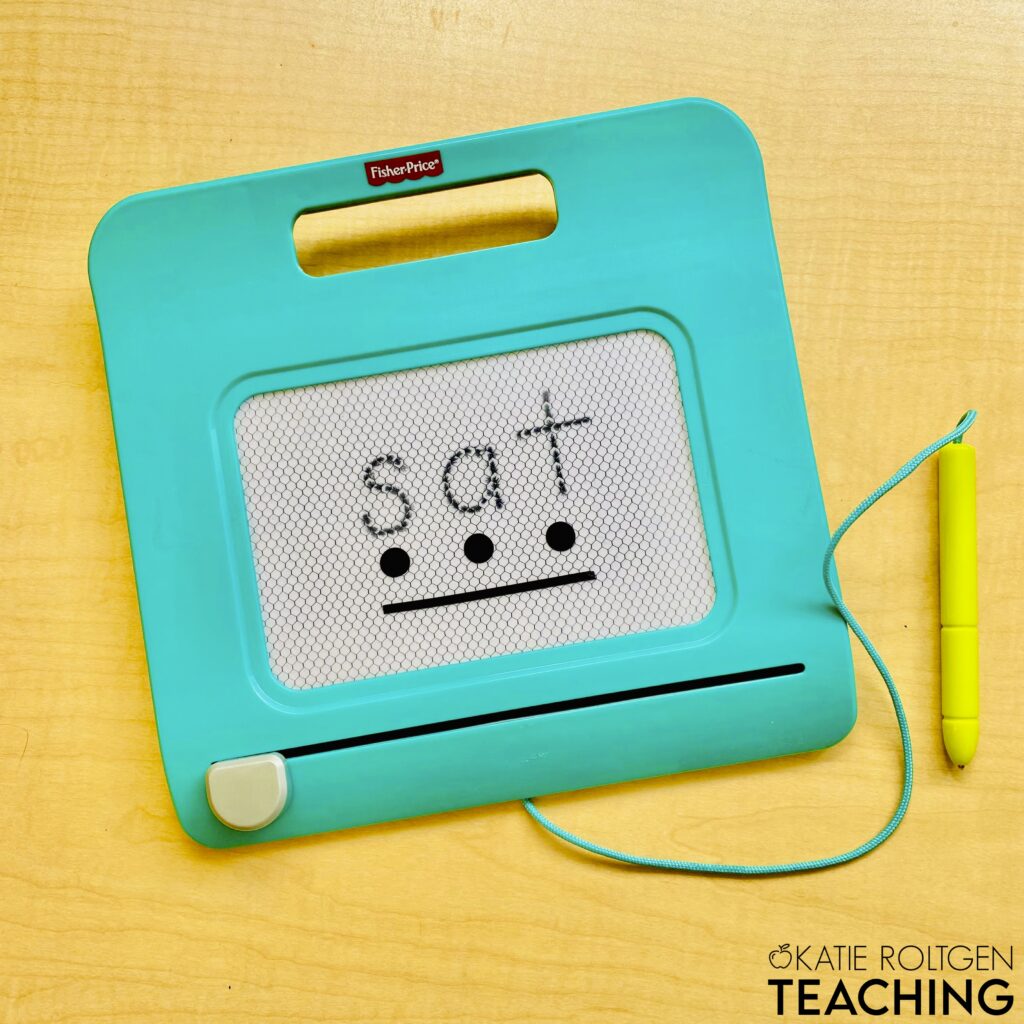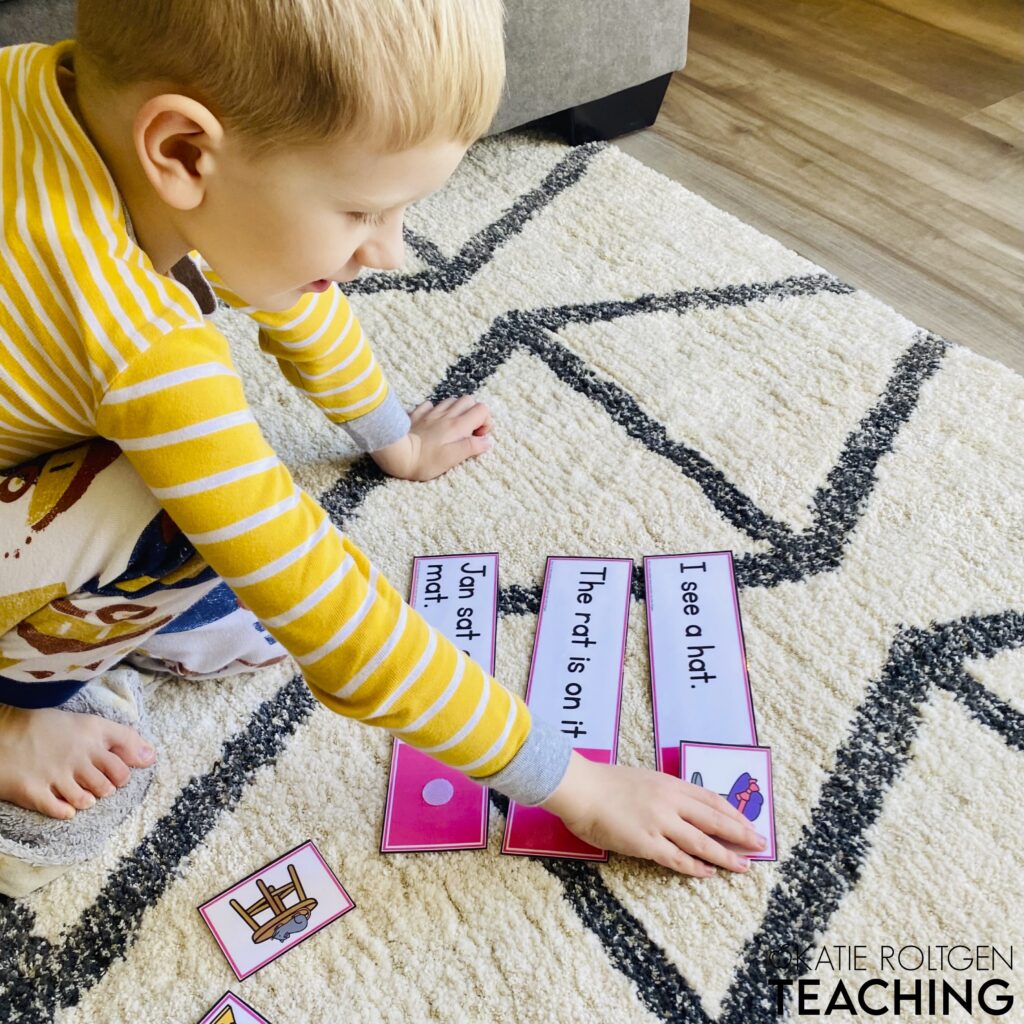
Menu
Hey there! I have a quick idea to share with you today.
As we teach children to read, an important part of any literacy program is teaching the skill of decoding. Providing our students with ample opportunities to practice their decoding skills helps develop them into strong readers and writers.
There are lots of ways you can work on decoding with your students. I usually use small white boards, and I’ve also used letter tiles or letter cards.
Recently, I found this slide-to-erase magnetic drawing board at a garage sale (only a dollar!) and thought it would make a great word building or word blending board. Students could simply write a word and slide to erase! The pen is attached so no time is wasted searching for dry-erase markers that aren’t dried up.

To make these boards, you’ll need the following materials:
Once we have the materials, it’s important to think about how to put the board together. We’re using the dot stickers for each letter, and the thin tape will go under the dots for students to slide their finger on.
Tip: If your students need to move beyond tapping sounds, just skip adding the dot stickers!

Depending on your students’ needs, you may use two dot stickers for two-letter words like “at”, “in”, and “up”. I’m using three dot stickers since that’s most typically what I would use throughout the kindergarten year.
Simply place the dot stickers as evenly spaced as you can. Then put a thin tape strip under the dots.
Word blending boards come in handy in so many ways! Here are just a few ideas for using them:

Having a variety of ways for students to practice decoding words is easier than ever!
If you’re looking for more word-level decoding practice, I have printable literacy games that have a ton of opportunities for CVC word skill practice. You can read more about those here!
I have a decodable activities bundle that’s designed with a mixture of hands-on activities and no-prep printables.
I’ve been using sone of these activities with my own son who will be five in April, and he loves them!

I hope you’ve enjoyed reading about how I made my own word blending boards! Let me know if you end up making these or anything similar.
I share lots of ideas on Facebook and Instagram, so head over and follow me there if you’d like!